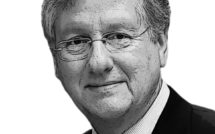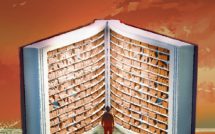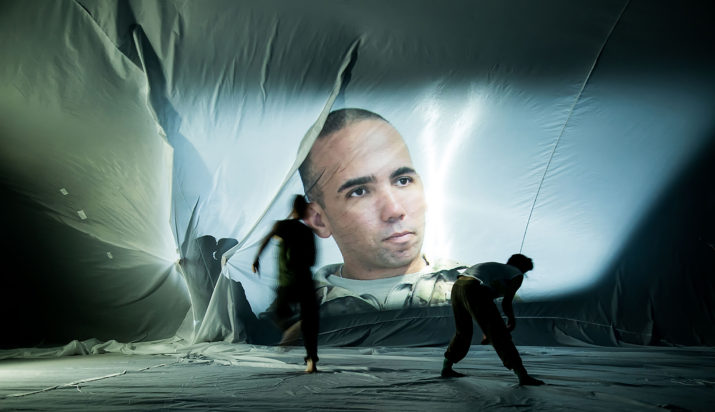
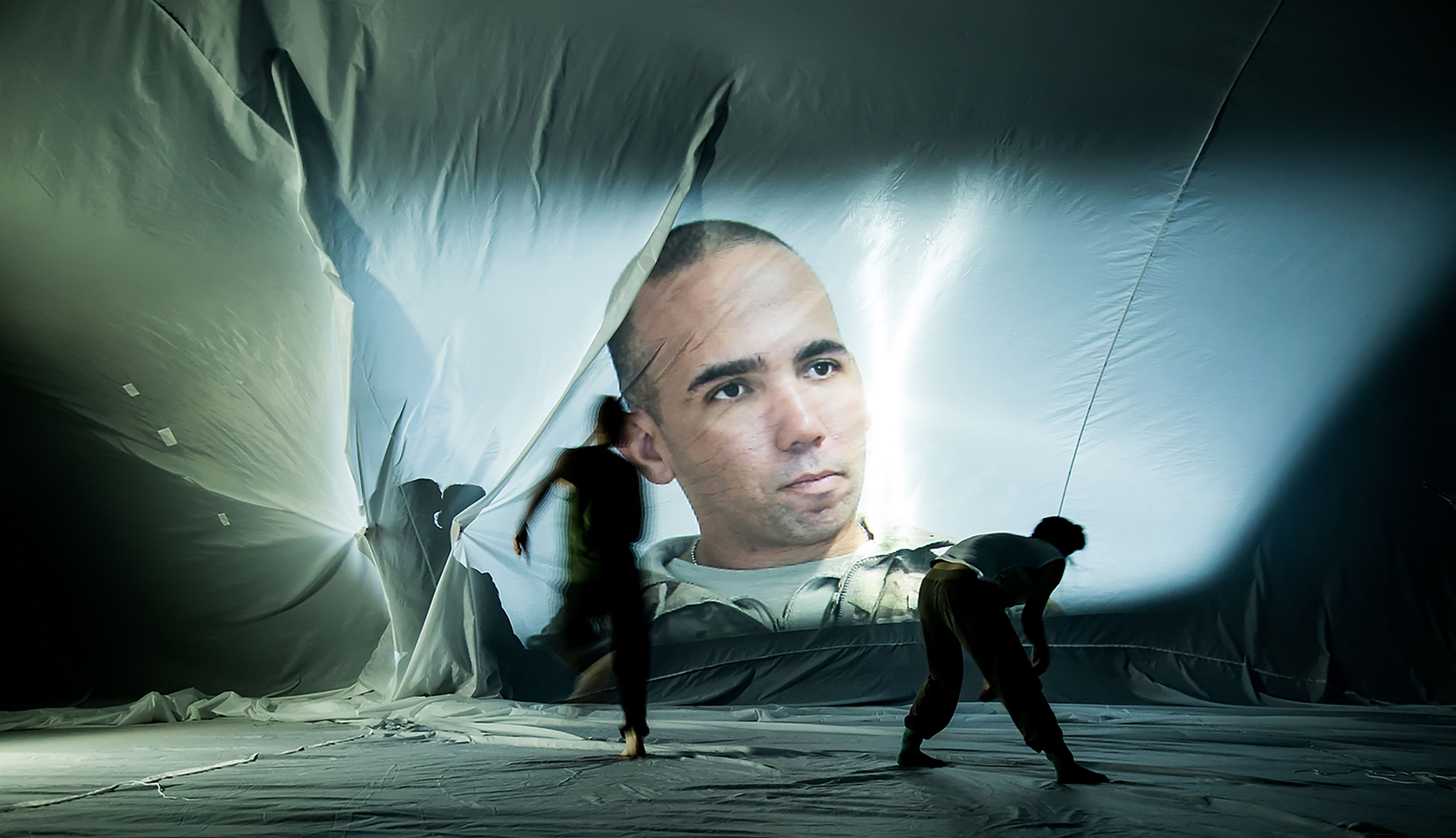
This is part of our special feature on Sustainability & Innovation.
The World, Europe, the US
Within the context of the world-wide refugee crisis, as well as the rising populism in the U.S. and Europe, one can clearly observe a distinct re-politicization of artists and their works, and the question of how to deal with the current state of uncertainty and urgency has been strongly reinforced in artistic discourse. Some of these projects included entering into dialogue across borders with witnesses of (violent) processes of transformation, thereby creating bridges that connect the past and present, and confront displacement and uprooting. Some vital and not unproblematic questions behind these developing structures of exchange have been: How to remember? What to remember? Who is talking how about whom? And in regard to this: How can artistic practice in the performing and visual arts achieve sustainability on the historical level and innovation on the artistic level at the same time?
This article deals with the projects of the Berlin and Hamburg based artist group Costa Compagnie, and describes the process of conducting interviews with civilians, soldiers and veterans in Afghanistan, Germany, and in the United States. It further illustrates how this material is transformed into interdisciplinary performances, combining text, contemporary dance, video, and audio into multi-media works.
As an example, I will draw on our multi-year documentary artistic exploration connected to German-American and Afghan history, its performances in Europe, and its adaption for an American audience at Vassar College in Poughkeepsie (NY).
For me, the topic of remembrance, politics, and artistic practice began when I was standing in plain sight of the first collapsing tower of the World Trade Center on that fateful day in 2001. It was the last week of a 1-year-round-the-world-travel that I took across Asia-Pacific and North America after having completed a year of compulsory military service in a paratrooper-unit in Germany. Thirteen years and two degrees in Geography, Development Cooperation, Intl. Law and Theater Directing later, I found myself in Afghanistan, speaking to women and men about the drawdown of Western forces towards the end of the International Security Assistance Force mission (ISAF), which came about as a result of 9/11. The work that resulted from this research in the Hindu Kush named CONVERSION / AFTER AFGHANISTAN and many of Costa Compagnie’s other projects thus focus on global transformational processes and the question for the human within – dealing with topics such as remembrance, transnational narratives and polyphony of critical voices. The desire for the non-European research locations derives from, inter alia, the wish to speak to individuals clearly outside of my own cultural and identitary contexts, who are directly involved in global political dynamics whose consequences do not affect me personally, but nevertheless shape the system I live in. I am also aiming to critically explore where and how Germany is involved outside of Europe and how these interrelations may have a retroactive effect on it. The objective is to create art works that retrace narratives outside the ones already familiar to us and thereby question ourselves, the society we live in and the effects of our socio-political actions in other parts of the planet. Dealing with the violent memories of interview-partners and making them heard, is also about a commitment to political resistance and in a broader perspective – it is about claiming the future. Geography, as a way to “describe earth,” serves as an essential scientific component of a project of laying out all elements involved in the artistic approach to complex political situations. Just as Carolyn Christov-Bakargiev, artistic director of the DOCUMENTA (13) once described it in an interview with the German newspaper Süddeutsche in 2012: “Scientists and artists today have in common that they are researchers, they do basic research.” Hence, the question behind our collaborative works – how to artistically collect, structure and enact remembrance – is understood as an active part of basic research that also raises the question: Where do we locate ourselves? Historically and in the present?
The choice of our artistic structure so far has been to realize our works with a relatively high number of artists from very different media so far as production options allow it. Documentary text by the interview-partners from their respective locations, self-produced essay text, as the representative of the group’s Western viewpoint, contemporary dance, audio- and video-art, plus poignant stage and costume design make up the components of the larger productions. In smaller contexts, works with just two to four people are also created, often with an essayistic narrative and a formal-aesthetic discourse about the used media. This interdisciplinary, complex collaboration between different media and artists is created as a reaction to the multitudinous complexity we engage in at the research locations in an effort to innovate different aesthetic forms on remembrance.
CONVERSION_1 / A GERMAN-AMERICAN CHOGEOGRAPHY
”Heidelberg certainly had a substantial strategic importance to the US Army and to NATO. Back in 1983 and still in 2003, because it was a very central location to contributing to the ‘Global War on Terror,’ both in Iraq and in Afghanistan.” (US Servicemember)
In summer 2013, the last US soldiers left the former headquarters of the US Army Europe in Heidelberg after sixty-eight years of continuous presence. Massive housing complexes and military installations in the city and a former “US-village” outside of town were cleared and handed over to the city administration, which started a large urban planning program titled “Konversion.” At the same time, Costa Compagnie and the Theater and Orchestra of Heidelberg began their cooperation, funded by the “Fonds Doppelpass” of the German Federal Cultural Foundation. The project lasted for a period of two years in Heidelberg and resulted in a one-year tour of the production. Research began in the city by interviewing its citizens about their memories of living with American soldiers and their families for decades. The earliest accounts reached back to the day when US combat troops entered the city in March 1945 and the latest to the last graduates of the American High School class of 2013. What traces did the US Army leave behind in Heidelberg and with the people who lived there and were deployed there? What memories remained? How did people shape their spaces and how did certain spaces shape its inhabitants? What role did the city play in a global system of troop deployments and conflict avoidance or exertion? And where do world politics meet individual biographies?
Notably, US-European dynamics were continually mirrored in the relations between Heidelberg citizens and US military personnel. From liberators to neighbors in the 1940s and 50s, to cultural ambassadors of the American way of life to “imperialists” (Vietnam) throughout the 60s and 70s, to “Cold Warriors” and protectors until the 1980s and invaders of Iraq in the 1990s. 9/11 brought a wave of affection and support for the American neighbors until security around the installations was so massively increased that a long appreciated shared space and public life between Germans and Americans finally came to an end.
Among these major narratives were many lesser-known episodes, like the activities of the German student-supported Black Panther Party in Heidelberg who protested US racism around Heidelberg, the repeated terrorist attacks of the Red Army Fraction on US soldiers, the invention of German Hip Hop on the banks of the Neckar and the countless family connections between Germans and Americans. To step away from this civilian viewpoint and gain insight into stories from the other side of the fence, two artists of Costa Compagnie, and two members of the City Theater made a journey to the US and traveled from NYC to Boston, Englewood (Florida), to LA and to San Francisco. On our journey, we spoke with soldiers and their families, who were stationed in Heidelberg, about their memories between 1945 and 2013. In addition to the conventional video-recordings of their recollections, we used a camera-drone from 250 feet above to film the spaces in which they worked or lived. We met veterans in Brooklyn and in front of the White House, who had deployed to Vietnam and Honduras and then became civil rights- and peace activists, we interviewed several officers at the United States Military Academy at West Point, who had deployed on numerous tours to Iraq and Afghanistan, and service members who for many years were on alert to be the first strategic casualty at Germany’s strategic Fulda Gap during the Cold War. We spent time with Heidelberg’s last serving Army chaplain at Arlington cemetery, and encountered a former four-star-general, who served as the commander of AFRICOM. All these encounters changed our perspective to a much more nuanced, critical, and conflicted understanding of Heidelberg’s connection to the larger world, as well as how the players involved in this German-American “play” were dealing with it. Notably, the fault lines of the larger global conflicts were always overlaid with memories of Southern German Gemütlichkeit, the Christkindlmarkt in Nuremburg, and fond memories of Bratwurst.
The material of over forty interviews then formed the basis for a dance performance, which took place at a large gymnasium on the grounds of the former US hospital in Heidelberg. Contemporary dance, text, large video projections and an encompassing music composition merged into an atmospheric, interactive and essayistic documentary. Staging the piece at a deserted US gymnasium with children’s paintings still on the wall, already located the audience, which was able to enter the building for the first time in decades, “in an historic document.” We decided to translate the constant movement of the deployed military personnel across military bases worldwide into a spatial movement and shifting of the audience within the gymnasium. Each carrying a light-weight cardboard-stool, the spectators sometimes had to choose their own location, sometimes they were kindly asked to move here or there, and at other times they were commanded in a rather determined way. In this manner, the visual, documentary essay moved through the decades and literally took the audience on a journey. A local newspaper “Rhein-Neckar-Zeitung” summarized: “Most of the spectators followed the movement instructions [by the artists] quite willingly: They lay down obediently on the rather cold gymnasium floor to gaze at drone videos of the American landscape projected on the ceiling and they streamed into a small cube installed out of white curtains without any protest. Titled a “German-American Chogeography,” the research and the artistic production proceeded through geographical and historical spaces, always looking for the experienced memory, which makes up reality for the individual. The question rose, whether one can draw any lessons for the future from the past? Or does history never repeat itself anyway? Asking these questions made it even more clear that ‘‘the’ historical reality or a documented truth do not exist.”
While still articulating these questions about the past, German soldiers themselves, their American and other international counterparts were preparing to leave a far-away country, in which they tried to bring about a political change through military means: Contrary to expectations, Afghanistan was nothing close to being a secure and stable country after 13 years of the NATO-led ISAF-mission, and violence and instability even seemed to be increasing. In order to address the situation there, it was clear –that despite certain security concerns– research had to be done in the Hindu Kush itself, since the Afghan point of view and their assessment of Western involvement were almost never heard in public and media discourses in Germany. Fully aware of the challenges of how to create an equal encounter between researching artists and individuals living in a conflict zone, the challenge was twofold: can through our very presence in the interviews, “the narrated” ever become the narrators? Is there opportunity, through a shared experience, to transform the interview partner from “witness” to “with-ness” and create a relationship out of a documentation, at least for a limited time? A limited time which might be extended to the point when the audience adopts the material that it has taken in?
CONVERSION_2 / AFTER AFGHANISTAN
“Everyday we leave the house we are aware that we may die.” (Afghan interview partner)
In October and November 2014, our choreographer Jascha Viehstädt, our videographer Stefan Haehnel and myself traveled to the Hindu Kush to speak to the people on site about the drawdown of the international forces. We collected conversations, sounds and images and asked especially the Afghans in the cities of Kabul and Mazar-e-Sharif about their views and feelings about the complex situation. In apartments, offices, universities and rose gardens we learned about the irrepressible will to reconstruct this country. We heard of security and arbitrariness, freedom struggles and chaos, of hospitality and the Taliban. We were able also to “embed” with the ISAF’s Camp Marmal close to Mazar and interview German, as well as Dutch and American soldiers (both male and female) about their experiences in the country.
The questions we wanted to explore and translate artistically were: how did the ISAF-mission affect the situation in Afghanistan? Which traces does the international military presence leave behind in Afghanistan and within the individuals involved? How can we avoid orientalistic and colonial patterns? And through which interdisciplinary artistic tools can we ever approach war? The divergence of statements was even greater than expected and trying to convey a complex polyphony of opinions, while not assuming and portraying a clear understanding of the situation or even a judgement of the ISAF mission became a challenging task.
As a major change in the aesthetic setting CONVERSION_2 was presented on the large opera stage of the Heidelberg theater and its dramaturgy was clearly based on interview texts, self-produced essay texts and segments of contemporary dance. Accompanying tableau-like videos of Afghan city landscapes and video portraits of interview-partners and an all-embracing sound-composition merged into an extraordinary, atmospheric form of presentation that also integrated a children’s choir with 30 participants. The stage design consisted of 100m-long plastic tubes in the first half and a gigantic inflatable bubble in the second, both filled and deflated with large ventilators and vaguely mirroring foreign military spatial interventions. A critic noted: “The Costa Compagnie does not try to explain the world to the audience. Instead, they very effectively and powerfully document the kaleidoscope of an heterogeneous Afghan present on the way to an uncertain future by artistic means.” The question of how to remember the US and German ISAF mission was answered soon enough: Afghanistan is present! In the months and year that followed our premiere in Heidelberg, many of the former US living quarters that had been returned to the Germans received new residents: Refugees from the wars in Afghanistan, Iraq and Syria.
The tour and re-visiting US-relations at Vassar College and in NYC
The German Federal Cultural Foundation supported a tour of the performance in Berlin, Hamburg and Graz that was realized independently by the freelancing members of the Costa Compagnie. The production also got invited to the Impulse-Festival 2016 in Düsseldorf, where the most outstanding productions in the independent arts scene are presented annually. The Mellon foundation through the Creative Arts Across the Disciplines Initiative at Vassar College and the German National Performance Net then brought the performance to Vassar College in Poughkeepsie, NY with an additional performance at the Goethe Institute New York. This led not only to contextualizing the performance with an American audience in mind, but also the opportunity to work with Vassar students, to integrate them into the performance, and to interview Vassar students from the Posse Veterans Program who had served tours in Afghanistan and Iraq, many of them with combat experience. In addition, a cadet from the USMA at West Point was given special permission to participate in the performance. Together we were able to participate in a vital exchange about how the arts can engage in political discourses and remembrance at the same time. Presenting the text of an USMC sniper (now a student at Vassar) among others, who lost his leg in Afghanistan presented us with a challenging take on the past and future of not only the biographies of military individuals but on US military interventions as a whole. The production of the work created an unprecedented opportunity for young, privileged college students to interact with their fellow veterans and cadet students around a difficult matter that is rarely talked about, as it carries highly personal and emotional elements, as well as difficult but important questions about military interventions and their often questionable purpose. The collaboration also shed a light on how veterans have perceived civilians in areas of conflict and how this perception may did align itself or differ from the viewpoint the Afghan interview partners that were expressed within the work.
This may prove one of the most profound results and insights from our collaborative artistic and scientific endeavor: individuals from different nations and background were able “to meet” and weigh arguments on stage by means of performers who presented their texts, when a direct conversation in real life might prove impossible. Cody Harman, one of the veterans at Vassar who had served in Afghanistan and was interviewed for this project reflected: “Watching them play and hearing our words and seeing ourselves on [the projected stage] screen was very powerful. It was very powerful. In one part of the show they kept going offstage and running and falling on the floor. And that were just the questions that kept cycling through our minds all the time [when we were deployed in Afghanistan]: What are we doing here? What is just happening? And then people kept falling. – You could interpret how you want to interpret. And that is the best way of doing it. Because there is no right or wrong.” The performance also prepared the ground for a larger public discussion about the experiences veterans have been going through during their deployment, to enable their reintegration into civilian society more effectively. The same insights might be applied to the challenges of integrating refugees, who had to leave their countries due to extreme violence. This may create a broader understanding among the public about the insolvable complexity of a warzone. Up to a certain point, creative arts may turn out as a civic instrument for transforming the lives of traumatized veterans and refugees alike. Sharing their stories, and to have it performed or having veterans and refugees engaging in performing the artistic expression themselves, could ultimately benefit veterans, refugees, their families, healthcare professionals and policy makers, while strictly respecting the limitations of aesthetical practice. Initiatives, such as the conference of the Council for European Studies at the University of Glasgow in July 2017 to connect veterans, scientists, artists and policy makers alike, may result in a better future understanding, how societies can deal in more appropriate forms with the aftermath of war, conflict and displacement.
It is vital not to reduce war to only those individuals, who have been serving in uniform, but to make the voices heard also of those, who did not have a choice to go to war or not. Civilians have to endure war’s reality and suffer its horrific consequences and are often portrayed by the media only in their victimhood; they are rarely empowered to articulate differentiated viewpoints. Thus, as a necessary step that Tania Canas from the Australian refugee organization RISE pointed out, it is important within the artistic discourse to not only produce art about refugees but also with and by refugees. The question of “How to remember” proves to be always linked to the question of “Who to remember.”
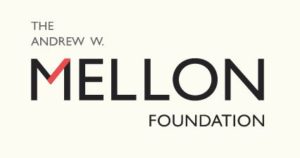
Felix Meyer-Christian works as the artistic director of the Berlin and Hamburg based COSTA COMPAGNIE in the field of performance and dance, in solo works within the visual arts, as well as a director in text-based theater. He completed degrees in Geography and International Law at Humboldt- and Free-University of Berlin and the University of Lisbon (2007), as well as Theater Directing at the Conservatory of Music and Theater in Hamburg (2012). His works combine documentary, choreographic and performative methods with an essayistic narrative with a focus on global transformational processes and have been presented at several festivals, theatres and art centers in Germany, Austria, Israel, Brazil and the US.
Published on June 6, 2017.

